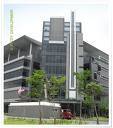The U.S. Federal Reserve on Friday threw the battered commercial property sector a lifeline by granting it access to an emergency program set up last year to unlock credit markets frozen by a global financial crisis.
The Fed said its $200 billion Term Asset-Backed Securities Loan Facility, which it has already said may grow to $1 trillion in size, will be opened from June to commercial mortgage-backed securities that were issued in 2009.
The TALF was launched last November as policy-makers fought a financial crisis sparked by the collapse of the U.S. housing market that has inflicted the worst recession in a generation.
"The inclusion of CMBS as eligible collateral for TALF loans will help prevent defaults on economically viable commercial properties, increase the capacity of current holders of maturing mortgages to make additional loans, and facilitate the sale of distressed properties," it said in a statement.
"CMBS accounted for almost half of all new commercial mortgage originations in 2007," the Fed said.
Risk premiums on commercial mortgage-backed securities rose after the Fed's announcement, with traders disappointed that the expansion did not include older and lower rated assets. As part of a broader government effort to remove bad assets from bank balance sheets, the Treasury has said the TALF will be expanded to cover these so-called "legacy assets", but the timing is still unclear.
Risk premiums on a derivative index of "AAA" rated CMBS climbed about 0.5 percentage point on Friday, to more than 5 percentage points above its interest rate benchmark. The spread has declined from nearly 8 percentage points in March.
The Fed also said the TALF would be opened to securities backed by loans used by small businesses to obtain property and casualty insurance.
Currently, all TALF loans have maturities of three years. The Fed said from June, TALF loans with maturities of five years would be available for CMBS, as well as securities backed by student loans and loans to small businesses.
It also said that up to $100 billion of TALF loans could have five-year maturities, and that limit will be kept under evaluation, in a hint that it could be lifted if necessary.
U.S. central bankers are wary about clogging up the Fed's balance sheet with longer-dated assets that may hamper their ability to reduce its size as the economy recovers, which will be important to keep inflation in check.
The Fed balance sheet has already been more than doubled in size as policy-makers pumped over $1 trillion into credit markets to prevent the financial crisis getting much worse.
To allay these concerns, interest on collateral financed with a five-year loan may be diverted toward an accelerated repayment of the loan, especially in years four and five, to encourage borrowers to exit the program and return to the private sector.
The Fed launched its TALF program in November 2008 as an emergency response to the seizure of the asset-backed securities market amid panic over losses following the failure of investment bank Lehman Brothers in September.
The decision to allow loans of up to five years bows to steady pressure from the investment community, which the central bank had initially resisted because of concerns that it would make the task of managing its balance sheet harder.
Commercial real estate is following the slump in residential property as the U.S. recession reduces land values and the revenue needed to pay debt.
Fed officials have said they are concerned about the possibility of rising problems in commercial properties, which could increase pressure on commercial banks.
Citigroup estimates commercial property delinquencies could rise to 4 percent this year and 8 percent in 2010 from about 2.5 percent last month.
Longer-term financing matters to investors in commercial real estate debt because the underlying mortgages are usually for longer terms, and investors would be less willing to hold these securities without the longer-term financing.
Source: Reuters 1 May 2009
.jpg)

No comments:
Post a Comment